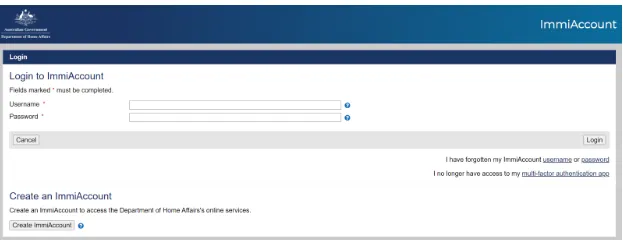You hired a builder, signed the contract, and imagined a refreshed kitchen, an extra bathroom, or a beautiful extension. Instead, you’ve got missed deadlines, invoices that keep arriving, substandard workmanship, and a growing pile of emails that feel more like evidence than communication. If that sounds familiar, take a breath, this is fixable. I’m writing as a construction lawyer who’s sat across from dozens of stressed homeowners in Brisbane.
Below, I’ll walk you through what typically goes wrong, the legal landscape in Queensland, the evidence and statistics that show this is common, and the clear, practical steps a Construction Lawyer Brisbane will take to help you recover money, finish your renovation, or both.
Also Read: Water Damage and Restoration in Australia: How Experts Protect Businesses?
Why Renovations So Often Go Pear-Shaped
Renovations are complex projects with many moving parts: contract terms, variations, supply chains, subcontractors, tradespeople, permits, and changing site conditions. Add cost pressures and a tight labour market, and you have a recipe for disputes.
Research into construction disputes shows that many causes are predictable. A recent review found that payment and financial problems, variations/change orders, and design errors are among the top drivers of conflict, and that a substantial share of disputes originate before work even starts, during the pre-contract phase.
In Queensland specifically, the Queensland Building and Construction Commission (QBCC), has been dealing with thousands of complaints every year. The QBCC has also piloted conciliatory dispute services that resolved hundreds of building disputes in short order, showing both the scale of problems and the capacity for early resolution when handled correctly.
The Legal Rules That Protect Homeowners in Queensland
If you’re in Brisbane, two important legal frameworks shape your rights:
- Queensland Building and Construction Commission Act 1991 (QBCC Act) – this Act regulates licensing, contractor obligations, and consumer protections for building work in Queensland. It also sets out forms, mandatory terms, and regulator powers.
- Domestic Building Contracts Act 2000 (DBCA) – applies to many domestic building contracts and imposes minimum contract terms and protections for homeowners undertaking renovations and other residential works. The QBCC also publishes guidance and standard domestic building contracts to help parties comply.
Those laws matter because they give homeowners tangible rights: limits on unlicensed work, contract form requirements, avenues to make complaints to the QBCC, and pathways to conciliation or tribunal outcomes for domestic building disputes.
How Common and Costly are Construction Disputes?
If you want cold numbers, industry reports, and regulator data to paint a clear picture:
- Global and Australian industry reports show the value and duration of construction disputes have been rising, with the average dispute value in Australia reported to be in the tens of millions (industry analyses put a recent average around AU$30–33 million for high-value disputes) and resolution times stretching into many months. That trend pressures all project participants and increases the costs of leaving disputes unresolved.
- The QBCC’s reporting shows it is actively involved in resolving hundreds to thousands of domestic building complaints each year, and pilots of early-conciliation services resolved hundreds of matters in months rather than years, evidence that early, structured engagement often limits loss.
- Academic and practitioner studies attribute a large share of disputes to pre-contract issues, payment/financial problems, and variations, meaning better paperwork and cashflow management goes a long way to preventing disputes in the first place.
Those figures aren’t just trivia: they explain why taking timely legal steps matters. The longer a dispute drags on, the harder it is to preserve evidence, secure funds, or find trades willing to finish the work.
What a Construction Lawyer Brisbane actually does (practical steps)
When you work with Construction Lawyers Brisbane, expect a practical, step-by-step approach focused on real results. They assess your contracts, identify issues, and take strategic action, from negotiation to dispute resolution, to help you recover efficiently.
1. Stabilise the situation (early triage)
First, we stop the situation from getting worse.
- Review your contract, invoices, variations, and communications. We’re looking for non-compliance with mandatory contract terms, unlicensed work, or missing statutory notices. (Under the QBCC Act and DBCA, there are specific contract and licensing rules.)
- Identify immediate safety or completion risks: unsafe work must be flagged to the builder and the QBCC.
- Preserve evidence: photographs, dated emails, delivery dockets, and inspection reports, they matter more than emotion.
2. Assess remedies and the low-cost options
Not every problem needs a court. Often, a letter from an experienced construction lawyer sets a pathway to resolution.
- Demand and negotiate: a formal letter (a “letter of claim” or “notice to remedy”) can trigger contractual dispute resolution clauses, force variations to be priced properly, or motivate a builder to finish work to avoid QBCC action.
- Conciliation and mediation: QCAT and QBCC conciliation services (and private mediators) have high settlement rates for domestic building matters, using them early saves time and money. In one QBCC pilot program, hundreds of building disputes were resolved through independent conciliation.
3. Regulatory pathways (QBCC)
If the builder is unlicensed or seriously breaches obligations, the QBCC can suspend or cancel licences and provide home warranty insurance routes for certain claims. A lawyer helps you run a robust complaint that meets the regulator’s thresholds.
4. Tribunal and court action (if needed)
When negotiation fails, options escalate:
- QCAT (Queensland Civil and Administrative Tribunal) – handles many domestic building disputes with less formality and cost than the court, and can order rectification, damages, or contract termination.
- Supreme or District Court – for large commercial disputes or where urgent injunctive relief is needed (e.g., to prevent a builder from disposing of assets).
- Security for costs and provisional remedies – construction lawyers know how to use procedural tools to protect clients while proceedings proceed.
5. Practical remedies beyond money
Often, homeowners want the work finished, not just money. Lawyers collaborate with engineers, independent inspectors, and new builders to prepare scopes and pricing so projects can be completed. Remedies may include rectification orders (fix it properly), termination of contract, or an agreed settlement with a completion plan.
A Typical Success Pathway (realistic expectations)
Let me be frank: not every case is a blockbuster win. But many are salvageable. Here’s an example pattern I see regularly:
- Client retains lawyer after several missed milestones and substandard finishes.
- The lawyer issues a notice to remedy and a proposed independent expert inspection. Builder disputes costs.
- Parties go to QBCC conciliation; an expert report and schedule of rectification is agreed. The builder agrees to complete specified works and an agreed holdback is placed. Case closed in months, with the homeowner getting completion and limited additional outlay.
That outcome is common when evidence is organised early, mandatory contract protections are invoked, and both parties engage in structured dispute resolution.
How Evidence and Experts Tip the Balance
Construction disputes turn on technical facts: was a material installed to spec? Was waterproofing done properly? Was a variation authorised in writing? Lawyers work with independent engineers and building consultants to produce expert reports that QCAT and courts respect. Those reports translate trade language into legal standards.
Studies show that expert-driven conciliation and early dispute resolution reduce time to settlement and overall costs, one reason regulators promote early-conciliation pilots.
When Other Legal Specialties Enter the Picture
Construction disputes sometimes overlap with other legal issues. For instance, a renovation dispute could form part of family law proceedings where the family home and its renovation funds are part of property settlement discussions. In those mixed contexts, you may need cross-referrals, for example, to Family Lawyers Gold Coast, so that both property and relationship issues are handled coherently and safely. (That exact phrase appears here because, in practice, construction lawyers and family lawyers often collaborate when money, property, and family dynamics collide.)
Common Homeowner Mistakes (and how we avoid them)
- Signing a contract without independent legal review – Many domestic building contracts contain one-sided terms; a lawyer flags risks and ensures mandatory DBCA protections are present.
- Paying large progress payments without documentation – Holdbacks, staged payments tied to milestones, and retention clauses protect homeowners.
- Letting issues fester – Delays in raising disputes make rectification harder and evidence weaker. Quick, measured legal responses preserve remedies.
- Trusting informal promises – Always get variations and promises in writing and signed.
Statistics and Studies that Should Concern Homeowners (brief recap)
- Industry reports indicate rising dispute values and longer resolution times across Australia, adding urgency to early legal action.
- Academic reviews identify payment and financial issues, variations, and pre-contract problems as top causes of disputes, meaning prevention is often about stronger contracts and clearer expectations.
- QBCC regulatory reporting shows active dispute volumes and success in early conciliation pilots, a good sign for homeowners who engage the right dispute channels early.
Practical checklist: what to bring to your first meeting with a construction lawyer
- Contract(s) and any written variations.
- All invoices and receipts.
- A timeline of events (dates, missed milestones).
- Photographs and inspection reports.
- Communications (texts, emails, letters).
- QBCC or other regulator correspondence (if any).
Bring everything; an experienced lawyer can sift what’s useful. The sooner you supply it, the quicker we can triage your file.
Costs: What To Expect Legally (and how to contain costs)
Legal fees vary based on complexity. But many construction lawyers offer staged engagement:
- Fixed fee for initial contract review and advice.
- Fixed-fee or capped-fee letters and negotiation.
- Conditional fee arrangements in limited circumstances (discuss with your lawyer).
- Early conciliation and mediation are generally far cheaper than tribunal or court hearings.
A frank cost discussion up front is part of the lawyer persona, we price to deliver outcomes, not to create more anxiety.
Act Smart, Act Early
Renovation disputes are stressful but not hopeless. The law gives homeowners multiple tools: contract protections under the DBCA, regulator pathways under the QBCC Act, conciliation and tribunal processes, and court remedies where necessary. The evidence is clear: early, structured legal engagement, backed by expert reports and a good organisation of documents, frequently converts a “renovation gone wrong” into a finished project or a fair financial outcome.
If you’re in Brisbane and currently facing a renovation meltdown, reach out to a specialist construction lawyer who will triage your situation, map your options, and start practical steps to recover your position. We’ll be pragmatic, evidence-focused, and straight-talking, exactly what you need when your home is on the line.



